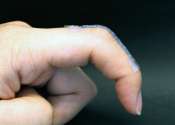Soft, multi-functional robots get really small
Roboticists are envisioning a future in which soft, animal-inspired robots can be safely deployed in difficult-to-access environments, such as inside the human body or in spaces that are too dangerous for humans to work, ...
Aug 6, 2018
2
242









